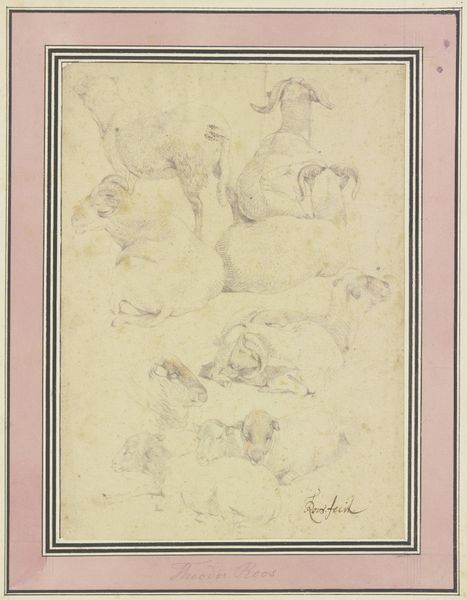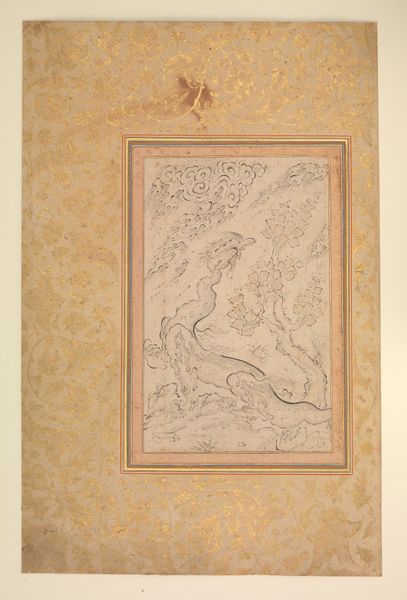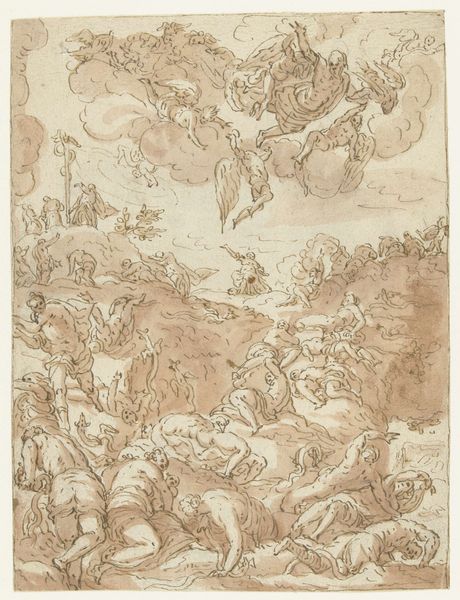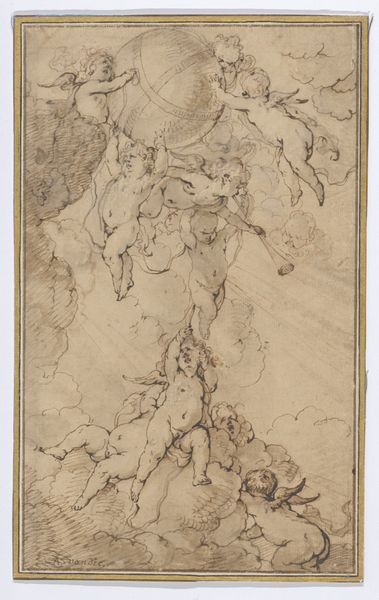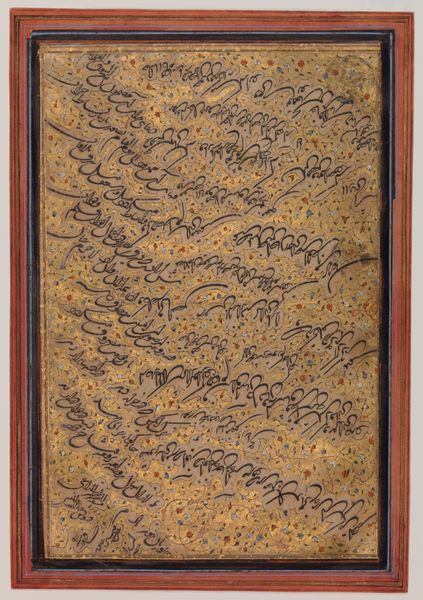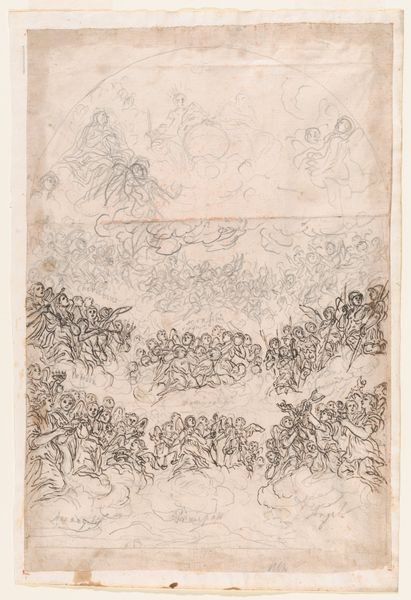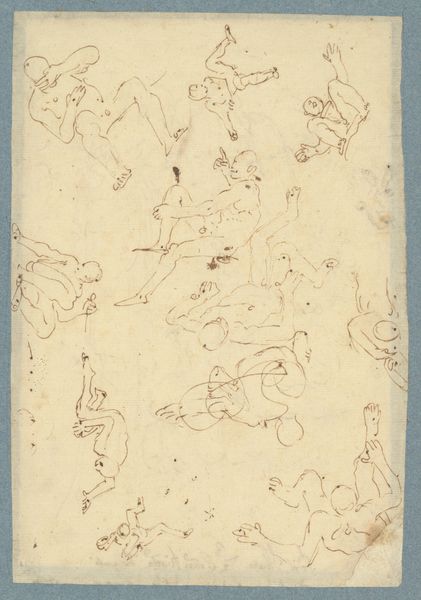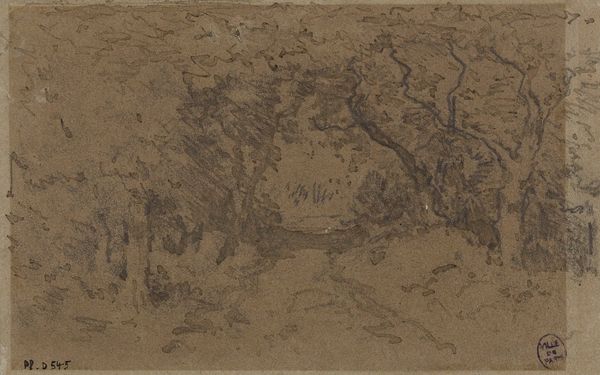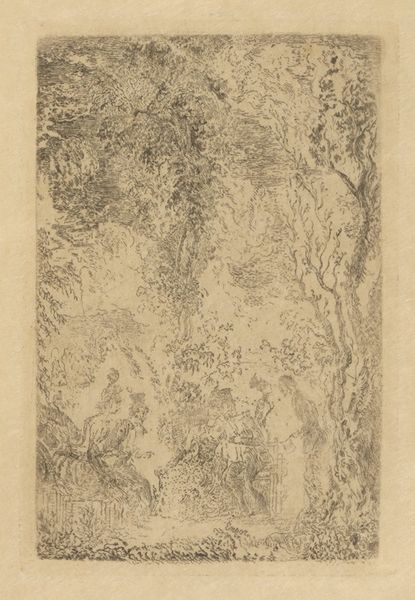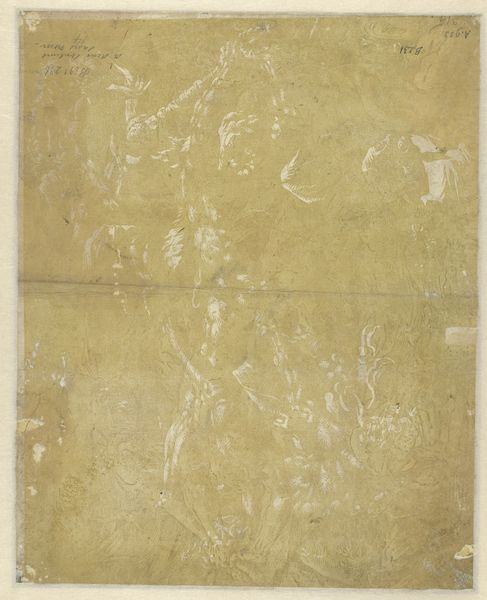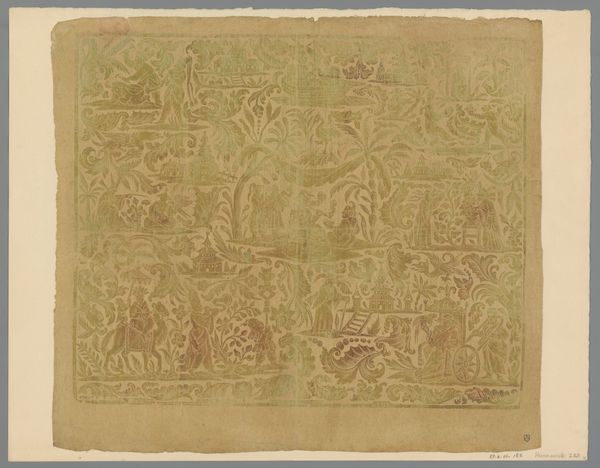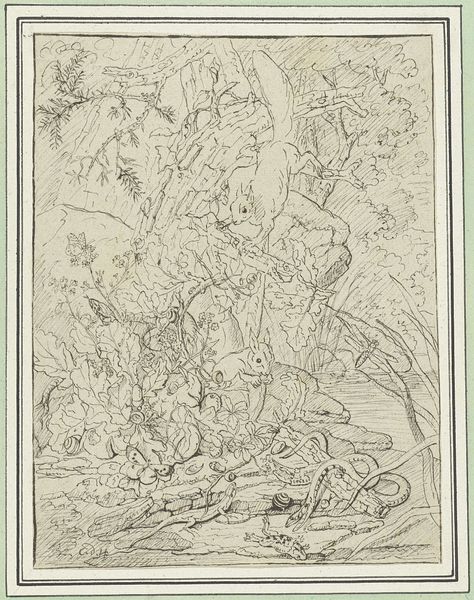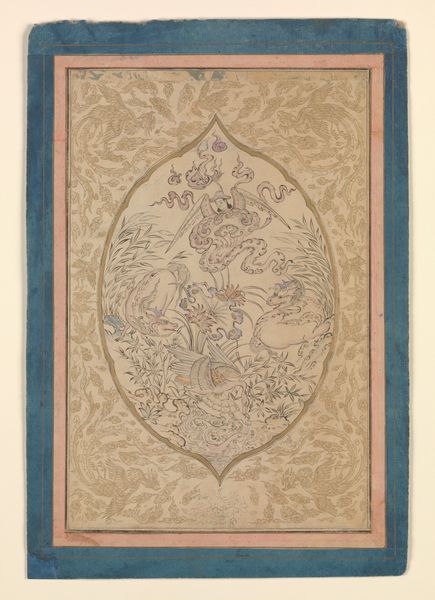
Dimensions: support: 370 x 238 mm
Copyright: CC-BY-NC-ND 4.0 DEED, Photo: Tate
Curator: I’m immediately struck by the sheer kinetic energy of this piece. It feels like a whirlwind of bodies caught mid-air. Editor: Indeed! This is "Fantasy of Flight" by Thomas Carwitham. Carwitham, born in 1713, was creating this striking image sometime in the early 18th century. It now resides here at the Tate. Curator: Early 18th century, wow. Are they angels? Demons? I can't quite tell if they're ascending or...falling. Editor: Well, the title suggests flight, but the sheer number of figures crammed into the composition creates a sense of overwhelming chaos. The work challenges the conventions of the time by disrupting traditional hierarchies. Curator: It's true. It's almost claustrophobic, but compelling! You can get lost in the details, making up stories for each figure. It is, in essence, about being free to dream. Editor: Perhaps it's a reflection on the societal constraints placed upon imagination, or a commentary on the human desire to transcend our limitations. Curator: Well said. It's a rather brilliant and mad little piece, isn't it? Editor: Precisely. It is an extraordinary and lasting exploration.
Comments
tate 7 months ago
⋮
http://www.tate.org.uk/art/artworks/carwitham-fantasy-of-flight-t08118
Join the conversation
Join millions of artists and users on Artera today and experience the ultimate creative platform.
tate 7 months ago
⋮
Carwitham is known primarily for sketches illustrating scenes from Classical mythology, mainly from Ovid's 'Metamorphoses'. At one point he is thought to have been a pupil of the decorative painter Sir James Thornhill (see no.3), later specialising in painting illusionistic architecture and sculpture. This unusual sketch is unlikely to be for a decorative scheme that was ever executed. It was probably done as an independent artistic exercise to test his skills in depicting falling figures seen from below. The loose, sketchy technique is very similar to Thornhill's, who was much criticised by his contemporaries for his lack of proficiency in drawing the human figure. Gallery label, September 2004
